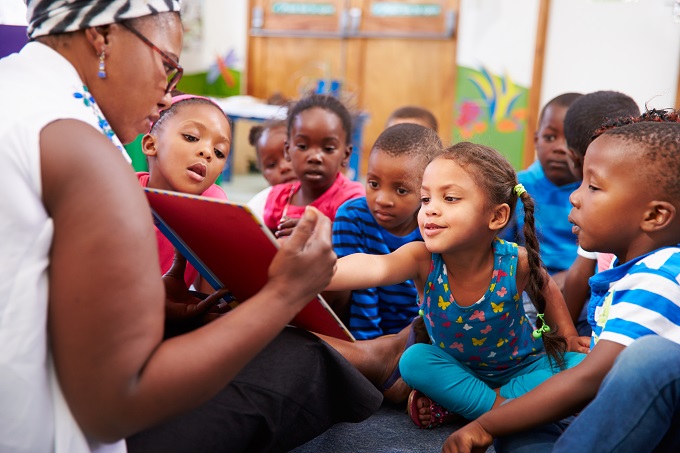
Instructional practices are all about how we teach students. Recently, while perusing the pages of the International Literacy Association’s Instructional Practices online resource, I was struck by the expansiveness of the listed methods: project based learning, student engagement through classroom libraries, collaborations between schools and the communities, and many others. To these powerful “big picture” practices, however, I would add a number of small, hour-by-hour instructional techniques educators can use to produce greater gains in student learning, especially for those who struggle to read, write, and spell. Here are three.
Wait time (think time)
Wait time is a technique that engages students, promotes language use, builds background knowledge, and increases comprehension. When students are given time to think before answering, their brains have time to more deeply and completely process questions and directions, recall facts and figures, and synthesize information.
At its core, the technique involves asking a question or requesting an action and then requiring students to think silently for a period of time before raising their hands to answer or before turning to talk to a partner. Three seconds of wait time is appropriate for the short attention spans of pre-K and kindergarten students. Increase the time to five seconds for 1st and 2nd graders. For older students, give six or seven seconds. The general behavior of different groups may call for more or less think time. Also, vary the amount of time depending upon the task. Students will need more time when a question calls for a more complex answer.
Direct and explicit instruction
When presenting critical literacy elements, from phonic patterns and vocabulary word definitions to comprehension strategies, be direct and explicit in your teaching. In other words, take the shortest paths possible to learning. For example, when I first present information on letter sounds, spelling patterns, and vocabulary words, I do my best to avoid asking students questions such as “Who knows what sound this letter makes?” and “Does anyone know what this word means?” Likewise, I steer clear of doing a discovery activity. Instead, the first thing I do is directly and explicitly tell students what I want them to know, see, or do. Why? Because it doesn’t harm anyone, and it greatly helps students who are at risk of reading difficulties.
Researchers and clinicians have been pointing out the power of direct and explicit instruction for years. The technique—which is easy to use, time efficient, and highly effective in getting kids to initially learn basic information—often involves specifically telling students what you want them to learn, explicitly modeling actions, and having students immediately repeat the information and actions with you and then to you.
This is not to say exploration, construction, and discovery should be tossed in the dumpster. The human mind is built for exploring and constructing, and so having students discover spelling patterns and make inferences based on text clues are instructionally valuable things to do. Nonetheless, I typically begin with direct and explicit instruction. Why? First, to be as efficient as possible. Second, to minimize the possibility that incorrect learning will occur. And third, to support students who need it. Later, once my at-risk learners have developed some foundational knowledge, I bring in differentiated exploration and discovery activities.
Repetition and distributed practice
It pays to assume that some students will need many exposures to master skills and remember information. This is especially true for children who have or may have a reading difficulty such as dyslexia. As Dr. Richard Gentry writes, one way to easily support children with dyslexia is to “embrace repetition” in their instruction “because the brain ‘loves’ repetition for developing automaticity in almost every skill.”
Effectively using repetition means more than repeating words and sentences over and over again. Rather, it is giving learners multiple chances to actively practice skills in multiple ways. To program for the number of exposures some students need, think in terms of differentiation, gradual release, and multi-modal presentations.
It helps to think of repetition as something other than mindless drills. Rather, consider it a discipline that leads to competence and freedom. As a musician, I know my repeated practicing of scales and rhythms lets me to have fun later on at a gig, where I can then improvise during a jazz tune or effortlessly read a musical score. In the realm of writing, students benefit from repeatedly practicing skills, including word spellings, grammatical rules, and text organization, all of which lay the foundation for crafting pieces that engage, inform, and entertain readers. Meanwhile, in the area of reading, skill repetition leads to reading fluency (accuracy, rate, and prosody), which in turn leads to greater comprehension.
Repeated practice should never be mindless and doesn’t have to be boring. For example, make skill practice more engaging by distributing it in small amounts over the course of the day rather than in monolithic blocks. Likewise, make the repetition of spelling-phonic patterns more interesting by presenting them in a variety of ways: in flip books that can be read, in word ladders that can be written on white boards, and on tiles that can be physically manipulated to make words.
Conclusion
When used hour-by-hour and day-after-day, small but powerful instructional practices (teaching techniques) can complement large-scale ones. The end goal of all effective practices is the same: increased student achievement and happiness.
Learn more from Mark Weakland by registering the on-demand recording of his ILA Webinar “Preventing and Overcoming Reading Difficulties, Pre-K–3,” sponsored by Corwin.
Mark's book How to Prevent Reading Difficulties is available to buy now from Corwin. Use coupon code ILA2021 during checkout for 25% off and free shipping on this book when you purchase at Corwin.com by October 1, 2021.
ILA member Mark Weakland is an author, consultant, teacher, and musician. He is the creator of teacher resource books, award-winning music projects, and almost 80 books for children. Follow Mark on Twitter at @MarkWeakland.